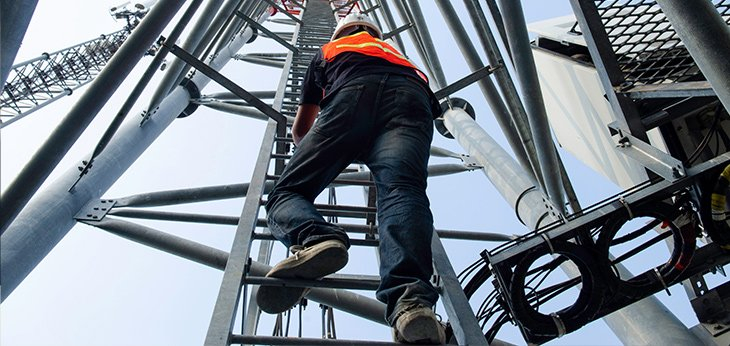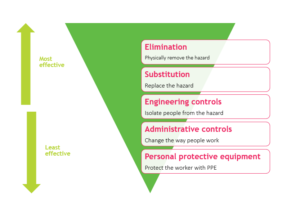In the earlier part of my career as an engineer, I remember being on a job site where we were asked to design and build a ladder and platform to access a valve in pipework that was about 30 feet up in the air. The valve needed to be used periodically for shutdowns and, hence, the need to design a system to safely climb up and access it.
Overall, I recall this work costing something like $30,000, and that was about 20 years ago. But I did reflect at the time on the question of why the valve was installed up so high when it could have been put at ground level where it could be accessed so much more easily and safer.
Whilst I didn’t realise it at the time, I was starting to think through what the hierarchy of control model does to give you a structured process for how to look at the ways to mitigate and reduce safety risks.
When it comes to managing safety and risk, not all mitigation strategies are created equal! Some will be more effective than others… and that is where the hierarchy of control comes in.
There are poor examples of ineffectual treatments to safety risks everywhere and perhaps you might have your own examples. Think about an organisation that puts up a sign to say that a floor is uneven or slippery rather than just fixing the floor itself. Or how about putting on more personal protective equipment when using chemicals, rather than looking to see if a less toxic chemical could be used instead.
There are examples everywhere when you start to think about it. The hierarchy of control model is shown below. Put simply, the idea is that it is best to use a higher level control because that has the better chance of eliminating or significantly reducing the risk. You might observe from the model that personal protective equipment or PPE is the lowest level of control. That is, you should try and use all of the higher strategies to eliminate a risk before finally using PPE as the risk mitigation of last resort.
Where or how does this matter? Remember cricketer Phillip Hughes who tragically died on field after being hit by a cricket ball in the head. Since that time, the main step taken was to change the batsman’s helmet and extend a part of it further down the neck – since the helmet is part of the PPE, the lowest level of control has been used, and one which would not be as effective as if a higher level of control was applied.
What else could have been done to ‘engineer’ a higher level control to mitigate the risk for the future? I’d argue that changes could have been made to the ball to reduce its hardness; or you could lengthen the pitch by a metre to reduce the speed of the ball when it gets to the batsman or something else rather than just adapt the PPE.
The cricket example is one that most people can relate to, though it possibly does not have direct application for your business.
One disability employment services business I saw had an issue managing the aggressive behaviour of clients towards their staff. The office setup was that meetings would take place one on one in a meeting room and staff would have a duress alarm button they could press if they felt unsafe. In one example of an incident, a client had a knife in his bag on display and said that he would hurt the staff member if they alerted anyone else. Through a 30 minute meeting, the staff member even left the meeting room a couple times to go to the printer but never alerted anyone else to the situation. After a review, we re-engineered the workplace to use the meeting rooms less and had the client meetings in an open office area where any aggressive client behaviour would be visible to other staff and even clients. Immediately, the number of incidents reduced by over 90%.







